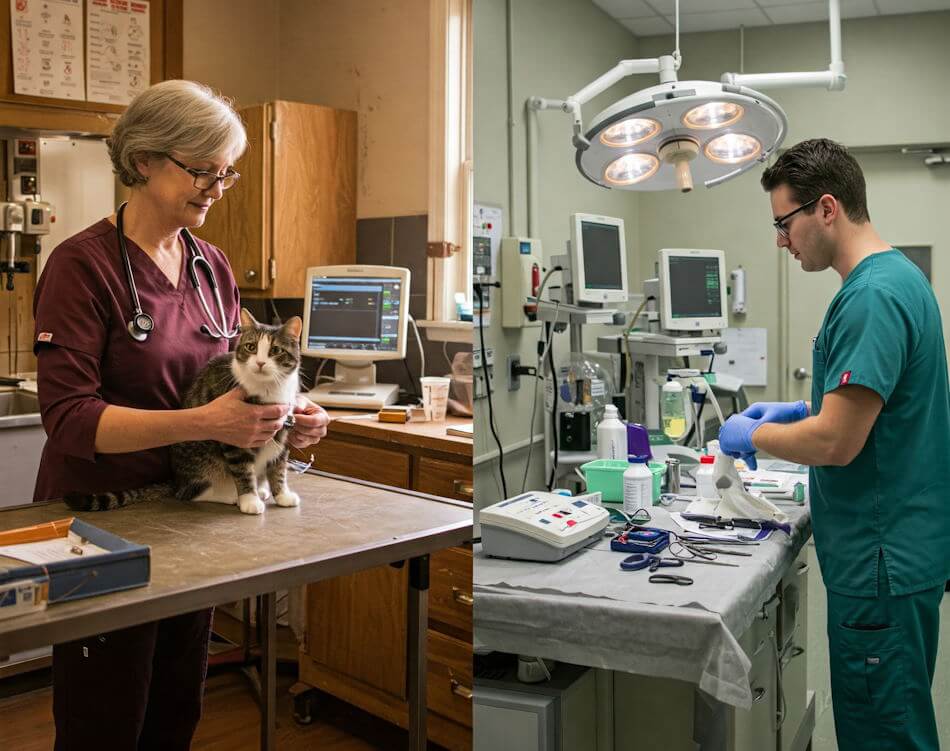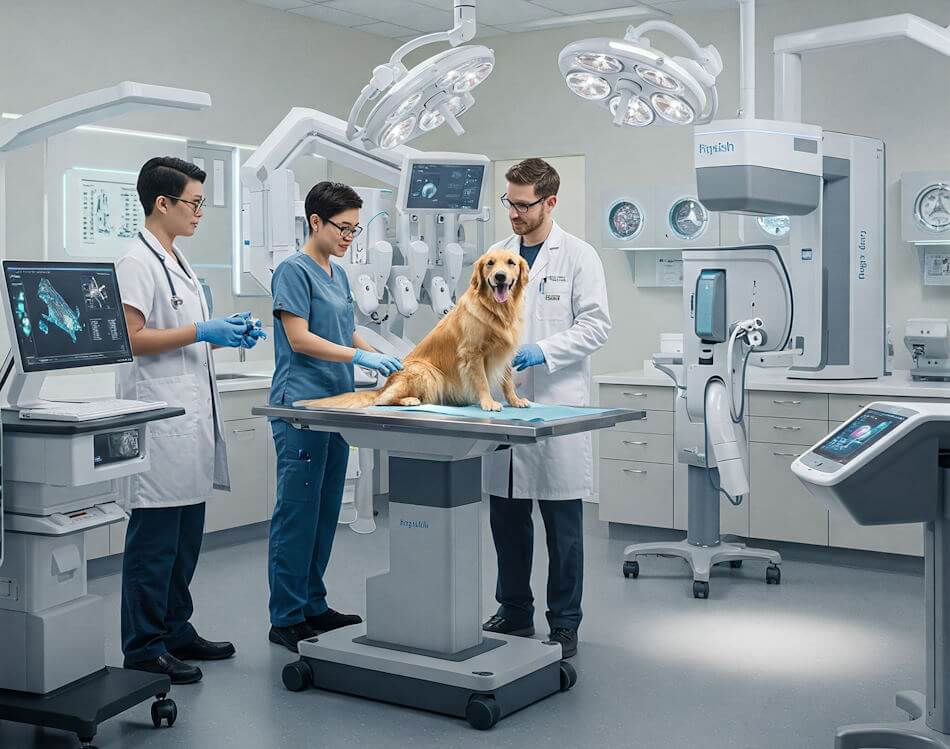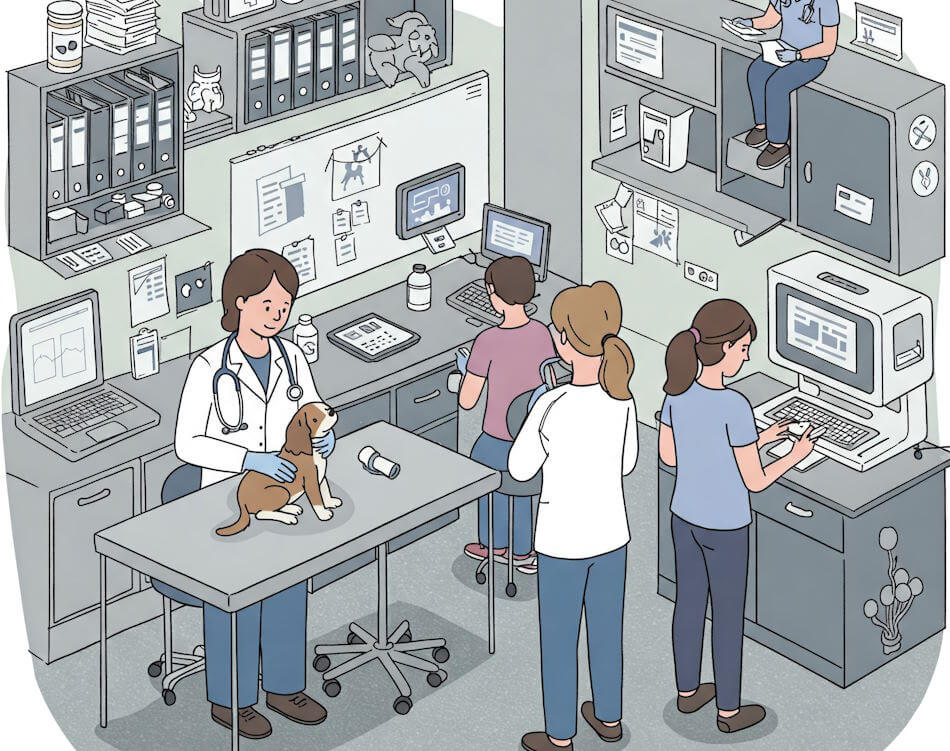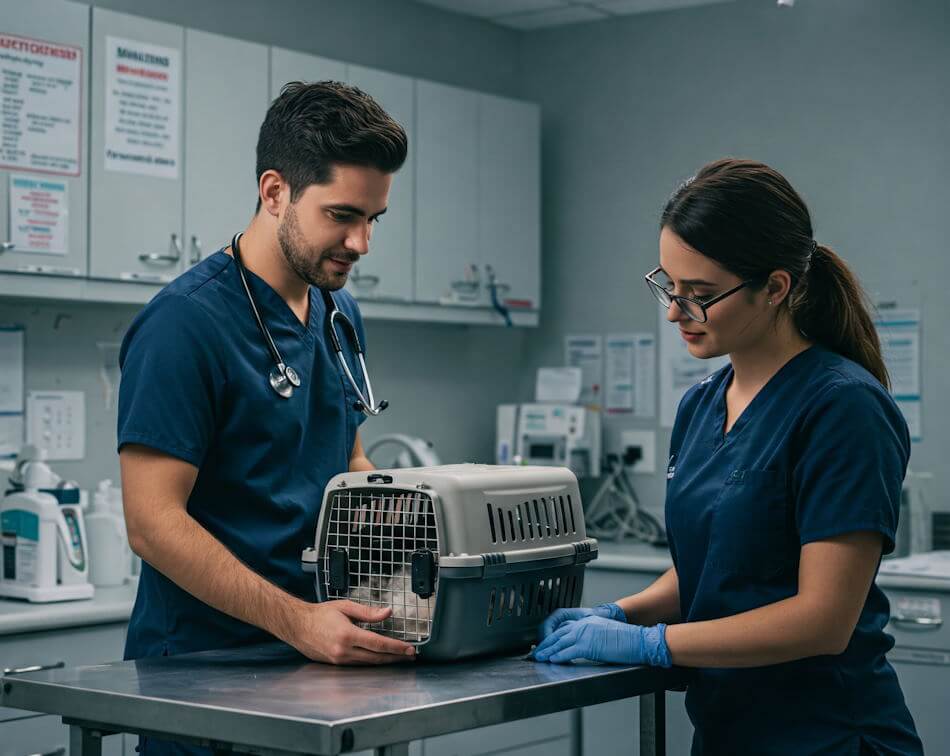The veterinary industry, much like other sectors, operates under various business models which shape the delivery of services and overall client experience. Among these, the two predominant models are independent veterinary practices and corporate-owned veterinary clinics. Understanding the differences between these two models is essential for both veterinary professionals and pet owners, as it can influence the quality of care, service availability, and overall relationship dynamics within the veterinary field.
Independent veterinary practices are typically owned and managed by veterinarians who have established personal relationships with their clients and their pets. These practices often emphasize personalized care and community engagement, focusing on the needs and preferences of individual pet owners. In contrast, corporate ownership usually involves larger chains or companies that prioritize standardized operations and profitability, which can lead to a different kind of veterinary experience—one that may emphasize volume and efficiency over personalized service. It is essential to recognize these distinctions when considering where to seek veterinary care.
The choice between independent practices and corporate-owned clinics can significantly impact pet owners’ experiences, as each model has its unique strengths and weaknesses. For instance, independent practices might provide a more tailored and familiar environment, while corporate entities can often offer advanced technologies and broader service capabilities. Moreover, understanding these business models can guide veterinary professionals toward making informed decisions about their careers and business strategies, ultimately benefiting the industry as a whole.
As the veterinary landscape evolves, being aware of these frameworks allows for informed choices that align with the values and needs of both practitioners and pet owners alike. This comparative analysis of independent versus corporate veterinary practices is, therefore, crucial for fostering a well-rounded understanding of the veterinary services available today.
Overview of Independent Veterinary Practices
Independent veterinary practices are privately owned facilities that operate under individual proprietorship rather than as part of a corporate group. This ownership structure allows for a high degree of flexibility in terms of operational decisions, enabling veterinarians to tailor their services and approach according to the unique needs of their community. The independence fosters an environment where practitioners can develop their own protocols, choose their preferred suppliers, and establish a distinct practice culture that aligns with their values.
One key advantage of independent veterinary practices is the emphasis on personalized care. Practitioners often form genuine relationships with their clients due to lower patient volumes and a strong focus on customer service. This relationship can lead to enhanced trust and loyalty, as pet owners feel more connected to their veterinarian. The personalized approach often translates into longer consultations, comprehensive pet health checks, and greater attention to the individual pet’s needs, which can significantly benefit both the animals and their owners.
However, independent veterinary practices do face certain challenges. Financial sustainability can be precarious, particularly when competing against corporate-owned practices that may benefit from economies of scale. Furthermore, these independent entities may struggle with marketing and visibility, impacting their ability to attract new clients. While community involvement is often a hallmark of independent practices, limited resources may restrict their ability to invest in advanced technologies or facilities compared to larger corporate counterparts. Building and maintaining a loyal client base is essential for independent veterinarians, and this requires continuous effort and adaptation to meet the growing expectations of pet owners.
Exploring Corporate Veterinary Ownership
Corporate veterinary ownership refers to the model where veterinary practices are owned and operated by larger corporate entities rather than individual veterinarians or small independent practices. In this structure, veterinary clinics often become part of a larger chain, resulting in a standardized approach to veterinary care across multiple locations. This corporatization can lead to significant changes in operational strategies, emphasizing efficiency, profitability, and uniform service delivery.
One prominent aspect of corporate ownership is the access to extensive resources. Corporate veterinary practices benefit from centralized management, which can lead to improvements in operational efficiency, marketing strategies, and employee training programs. They often have the financial leverage to invest in advanced medical technologies and facilities, allowing them to provide enhanced patient care. Furthermore, corporate models may offer competitive pricing for services, which can attract a larger client base.
However, there are notable drawbacks associated with this model. Corporate ownership can lead to a streamlined approach that prioritizes profitability over personalized care, which is a hallmark of independent practices. Veterinarians working under corporate structures may face restrictions on medical decision-making, as standardized protocols dictate the care provided. This can lead to a sense of frustration among veterinary professionals who value autonomy and the ability to tailor their services to the unique needs of pets and their owners.
In addition, the potential for corporate mergers and acquisitions can create instability within the job market for veterinarians. As corporate entities continue to grow by consolidating practices, there may be concerns regarding the future landscape of veterinary care and the role of individual veterinarians. The trade-off between resources and personalized care exemplifies the complex dynamics surrounding corporate veterinary ownership, highlighting the need for critical evaluation of its impact on the profession and pet health outcomes.
Comparative Analysis: Services and Patient Care
The distinction between independent veterinary practices and corporate-owned clinics extends significantly into the realm of services and patient care. Independent practices typically focus on developing personalized relationships with their clients, which allows for a nuanced understanding of individual pet needs and owner preferences. Veterinary practitioners in these settings often spend considerable time with each client, facilitating thorough consultations that foster trust and loyalty. As a result, they may better address unique cases and offer tailored treatment plans, enhancing overall patient care.
In contrast, corporate-owned veterinary clinics often prioritize efficiency and standardized protocols in service delivery. While they may offer a broader range of services due to shared resources and capital investment, patient interactions might feel more transactional and less personal. The corporate model often emphasizes volume, which can lead to shorter appointment times and a focus on a one-size-fits-all approach to treatment. Thus, while corporate clinics can provide a variety of advanced services, the depth of individual client relationships may suffer, impacting the overall quality of patient care.
Financial Considerations in Practice Ownership
When evaluating the financial implications of independent veterinary practices versus corporate-owned facilities, several critical factors come into play. One of the foremost considerations is the startup costs associated with each model. Independent practices often incur significant initial expenses, which include leasing or purchasing property, equipping the clinic, and hiring staff. In contrast, corporate-owned practices may benefit from economies of scale, reducing the burden of these costs through shared resources and centralized support services. However, corporate ownership typically involves adherence to strict financial guidelines that may limit flexibility in expenditures.
Revenue generation is another crucial element in assessing the financial landscape of veterinary practices. Independent clinics rely heavily on personalized client relationships and community engagement to drive business. While this approach can foster loyalty and attract repeat customers, it may also limit the volume of clients as the practice scales. Alternatively, corporate practices can leverage standardized marketing strategies and broader networks to enhance customer acquisition, often resulting in higher patient volumes. This difference can influence profit margins substantially, as efficiency in operations can be significantly higher within a corporate framework.
Furthermore, financial risks vary markedly between the two ownership structures. Independent practice owners face the challenges of unpredictable cash flows and the potential for financial instability due to market fluctuations or personal health crises. In contrast, corporate-owned practices often operate with more significant capital reserves and diversified financial backing, providing a buffer against occasional downturns. However, this model may also face risks related to corporate policies, which could limit the owner’s ability to adapt to local demands effectively.
Overall, understanding these financial considerations is essential for prospective practice owners. The choice between independent and corporate ownership can significantly influence not only immediate financial outcomes but also long-term sustainability in a competitive veterinary landscape.
Impact on Work-Life Balance for Veterinarians
The work-life balance of veterinarians can significantly fluctuate depending on whether they are employed in independent practices or corporate entities. In independent veterinary practices, the flexibility in scheduling often allows veterinarians greater autonomy over their hours. This can lead to improved work-life balance as veterinarians are better able to prioritize personal obligations alongside their professional responsibilities. Owners of independent practices can adjust their hours to accommodate client needs while ensuring their own wellbeing, which can enhance job satisfaction and mental health.
Conversely, corporate-owned veterinary practices may impose more rigid working hours due to standardized policies and operational expectations. Veterinarians in these settings might find themselves working long shifts, which can detract from their personal lives. The structured hours and demanding workload often found in corporate environments can lead to increased stress and decreased job satisfaction among veterinary professionals. This lack of flexibility can also affect their emotional health, making it essential for veterinarians to seek support mechanisms within these corporations.
Moreover, organizational support plays a crucial role in influencing the work-life balance in both settings. Independent practices may foster a more collaborative and supportive environment, allowing veterinarians to seek help when needed. This support network often results in lower burnout rates. In contrast, corporate practices may struggle to offer a similar level of emotional and professional support, further exacerbating feelings of isolation and stress among veterinarians. It is vital for corporate entities to recognize and address these challenges to promote better mental health and enhance job satisfaction within their teams.
Client Perspectives: Choosing Between Models
When it comes to choosing between independent veterinary practices and corporate-owned clinics, pet owners often weigh several factors, from the perceived quality of care to their overall service experiences. Many clients express a preference for independent veterinary practices, citing a more personalized level of attention as a key influence on their loyalty. For instance, pet owners frequently report that veterinarians in these settings take the time to get to know their pets on an individual basis, offering tailored treatment plans that consider both the animal’s health and the owner’s concerns. This personal touch fosters trust and deeper relationships.
In contrast, some pet owners are drawn to the convenience often associated with corporate veterinary clinics. These establishments frequently have extended hours, which is an essential factor for those juggling busy work schedules. Additionally, corporate clinics may offer advanced technology and facilities that can sometimes lead to more efficient service and quicker access to specialists. However, clients occasionally express feelings of being just another number in these larger systems, where the focus on throughput can detract from the quality of personalized care.
Anecdotal evidence from various pet owners illustrates the dichotomy of perceptions. One client shared that their experience with an independent vet felt like “family,” where concerns were addressed holistically. Conversely, another pet owner noted that while their corporate clinic was efficient, the “human connection” seemed lacking. Such testimonials highlight the varying degrees of client satisfaction inherent to each model. Ultimately, the choice often boils down to individual preferences regarding quality of care, relationship dynamics with practitioners, and service availability. As pet owners navigate these options, understanding these differences can empower their decision-making processes for their pets’ healthcare needs.
Future Trends in Veterinary Business Ownership
The landscape of veterinary business ownership is evolving, influenced by various factors that include technology, consumer preferences, and economic pressures. One notable emerging trend is the shift towards hybrid models that combine elements of independent practices with corporate affiliations. These hybrid models often allow veterinarians to maintain their autonomy while benefiting from the support and resources provided by larger corporate entities. This combination can enhance operational efficiencies and improve patient care, making it an appealing option for many practitioners.
Telemedicine is another significant trend reshaping veterinary business ownership. The COVID-19 pandemic accelerated the adoption of telehealth services among veterinary practices, allowing for remote consultations and follow-up care. This emerging sector not only increases access to veterinary services but also fosters a greater connection between practitioners and pet owners. As technology continues to advance, more independent practices may adopt telemedicine solutions to cater to clients’ needs, ultimately leading to more competitive and innovative service offerings.
Corporate social responsibility (CSR) is becoming increasingly prominent within the veterinary field, as both independent and corporate practices recognize the importance of ethical considerations and community engagement. Veterinary professionals are becoming more aware of their impact on the environment and society, prompting them to adopt sustainable practices. For example, some practices now prioritize eco-friendly products and support local animal shelters or rescue organizations. As consumer expectations evolve, veterinarians may need to adapt their business models to align with these societal values, ensuring their relevance and appeal in the market.
Looking ahead, the veterinary sector faces promising opportunities and challenges as it navigates these trends. By understanding and embracing the shift towards hybrid models, leveraging telemedicine, and acknowledging the importance of CSR, veterinary practices can position themselves for success in a competitive landscape. This evolution not only benefits veterinary professionals but also enhances the overall experience for the pet-owning public.
Conclusion: Making Informed Choices in Veterinary Care
In the increasingly complex landscape of veterinary care, it is essential for pet owners to make informed choices regarding their animals’ health. By understanding the fundamental differences between independent veterinary practices and corporate-owned veterinary facilities, pet owners can better evaluate the services available to them and select a practice that aligns with their values and expectations.
Independent veterinary practices often denote a more personal touch, where veterinarians build long-term relationships with both pets and their owners. Such practices frequently prioritize individualized care, allowing for nuanced treatment plans tailored to each animal’s unique needs. Moreover, these practices tend to operate with a degree of autonomy that can result in more flexibility when making clinical decisions. Pet owners may find that the depth of historical knowledge about a patient fosters a level of care that transcends routine treatment.
The ongoing dialogue surrounding these models of veterinary care will only continue to grow, and awareness among both practitioners and pet owners will become increasingly vital. Ultimately, understanding the nuances of veterinary ownership types will empower pet owners to advocate effectively for their pets’ healthcare needs, leading to enriched partnerships with their chosen veterinarians.





